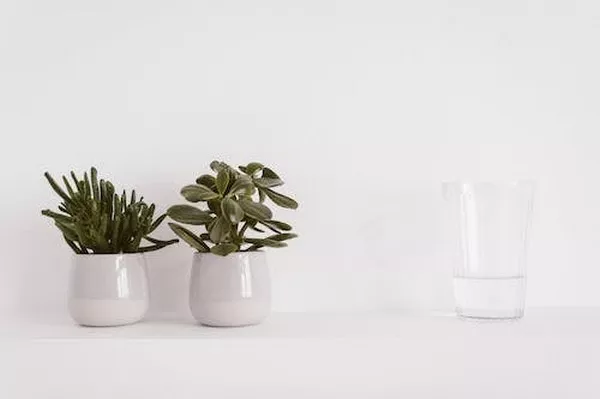Succulents have become incredibly popular due to their unique appearance and low maintenance requirements. While they can create stunning standalone displays, planting flowers alongside succulents can add vibrant colors and intriguing textures to your garden or indoor space. In this article, we will explore the art of combining flowers with succulents, discussing compatibility, design considerations, and some great plant combinations to inspire you.
The Importance of Compatibility
When selecting flowers to plant with succulents, it is crucial to consider their compatibility in terms of water requirements, sunlight exposure, and growth habits. Succulents thrive in well-draining soil and are adapted to withstand drought conditions. Therefore, it is essential to choose flowers that share similar needs to avoid issues like overwatering or root rot.
Additionally, consider the amount of sunlight the chosen area receives. Many succulents prefer bright, indirect light, so selecting flowers that can tolerate the same lighting conditions will help ensure a harmonious partnership.
Design Considerations
Integrating flowers with succulents allows for endless creative possibilities. Here are some design considerations to keep in mind as you plan your succulent-flower combinations:
a) Color harmony:
Select flowers that complement the natural hues of your succulents. Harmonious color combinations can create a visually pleasing arrangement. For example, pairing blue-toned succulents with yellow or orange flowers can provide a striking contrast.
b) Texture and form:
Succulents often feature unique shapes and textures, such as rosettes or spiky leaves. When choosing flowers, opt for varieties that offer contrasting textures and forms. Combining delicate, lacy flowers with the bold, architectural structure of succulents can create an eye-catching juxtaposition.
c) Flowering time:
Consider the flowering period of both succulents and flowers to ensure a continuous display of colors throughout the year. Some succulents have specific blooming seasons, so selecting companion flowers that bloom during different times can extend the visual interest in your garden.
Complementary Succulent-Flower Pairings
Now that we understand the importance of compatibility and design considerations let’s explore some exciting combinations of succulents and flowers:
a) Aloe Vera (Aloe barbadensis) with Lavender (Lavandula spp.):
The spiky leaves of Aloe Vera pair beautifully with the fragrant, purple blooms of lavender. Both plants require well-drained soil and prefer full sun, making them a compatible duo.
b) Echeveria (Echeveria spp.) with Ice Plant (Delosperma spp.):
The rosettes of Echeveria, with their pastel tones, provide a delightful contrast against the vibrant, daisy-like flowers of the Ice Plant. Both plants are drought-tolerant and prefer bright sunlight.
c) Sedum (Sedum spp.) with Black-Eyed Susan (Rudbeckia hirta):
The upright structure and fleshy leaves of Sedum create an engaging backdrop for the golden-yellow petals of Black-Eyed Susan. Both plants thrive in sunny locations and well-draining soil.
d) Hens and Chicks (Sempervivum spp.) with Pansies (Viola spp.):
The tight clusters of Hens and Chicks paired with the cheerful faces of Pansies create a charming combination. Both plants appreciate ample sunlight and well-drained soil.
e) Agave (Agave spp.) with Red Yucca (Hesperaloe parviflora):
The architectural beauty of Agave blends perfectly with the slender, coral-red flower spikes of Red Yucca. These plants are drought-tolerant and prefer full sun, making them an ideal pairing.
f) Jade Plant (Crassula ovata) with Geraniums (Pelargonium spp.):
The glossy leaves of Jade Plant provide an excellent backdrop for the vibrant, showy blooms of Geraniums. Both plants thrive in well-draining soil and prefer bright, indirect light.
Can you plant succulents in coffee grounds?
Planting succulents in coffee grounds is not recommended as the sole growing medium. While coffee grounds can be beneficial when added to compost or used as a soil amendment, they are not suitable for growing succulents on their own. Here’s why:
Drainage:
Succulents require well-draining soil to prevent root rot and other moisture-related issues. Coffee grounds tend to retain moisture, leading to excessive water retention and potentially suffocating the plant’s roots.
pH Level:
Coffee grounds are slightly acidic, which may not be ideal for succulents that typically prefer slightly alkaline or neutral pH levels. Using coffee grounds alone as a growing medium can disrupt the pH balance of the soil and adversely affect the plant’s health.
Nutrient Imbalance:
Coffee grounds contain certain nutrients like nitrogen, potassium, and phosphorus. However, when used in excess or as the primary growing medium, they can result in an imbalanced nutrient profile, causing nutrient deficiencies or toxicities in succulents.
Instead of using coffee grounds alone, it is best to incorporate them into a well-balanced potting mix or compost. Coffee grounds can contribute organic matter to the soil, improve its texture, and enhance its ability to retain moisture without compromising drainage.
For a suitable succulent growing medium, consider combining coffee grounds with materials like coarse sand, perlite, and well-draining potting soil specifically formulated for succulents. This will help create a well-aerated, fast-draining mix that meets the specific needs of succulents.
Remember, while coffee grounds can have some benefits for plants, including succulents, it is essential to use them in moderation and in combination with other appropriate components to ensure optimal growing conditions for your succulents.
Conclusion
Integrating flowers with succulents can transform your garden or indoor space into a mesmerizing display of color, texture, and form. By considering compatibility, design elements, and selecting suitable combinations, you can create stunning landscapes that highlight the unique features of both succulents and flowers. Experimentation and creativity are key when it comes to finding the perfect pairings, so don’t be afraid to explore and let your imagination flourish. Enjoy the process and watch as your succulent-flower combinations bring joy and beauty to your surroundings.


